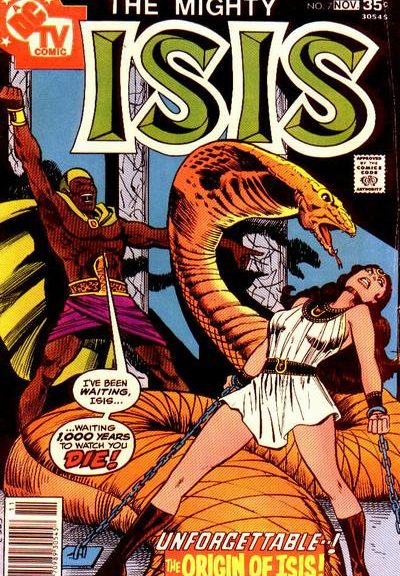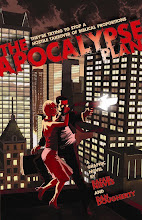[The following piece was originally published at Women Write About Comics in two parts; and it is reposted here with the author’s permission, for the first time in its entirety.]
My cocktail party introduction of myself is basically, “I’m a religion scholar working on a dissertation that uses a comics to interpret religious text.” Maybe it’s not the smoothest handshake, but it’s a place to start. When I tell people this, I occasionally get quizzical looks from strangers who wonder how comics relate to religion at all. Either that or they are wondering if they are going to need another cocktail before we get into a conversation. The comics/religion relationship is a fantastic tangle that needs to be sorted out when we get into deep discussions. If we talk about religion and comics without sorting this out, we risk all kinds of misunderstandings and hurt feelings, not to mention frustrating cocktail parties.
Religion and comics have been in some sort of relationship for millennia. Stained glass church windows are a familiar Christian example; they tell the stories that are important to the builders of particular churches in different styles. Ancient peoples used comics-type language in cave paintings and Egyptian tombs to express their relationship to the supernatural. Although my own work centers mostly on Christian relationships to comics, I want to stress that there is much more out there to be discovered in comics from all the world’s religions. Comics are a medium that can deliver a particular message where text and images interact to create narrative and emotional results—something that religions of all stripes often strive to do and that comics can do with religious effect.
I conceive of the relationship between comics and religion in four categories: comics as religion, comics in religion, religion in comics, and religion and comics in dialogue. In this month’s installation, I’ll give you the first two categories (comics AS religion and comics IN religion), but be sure to follow along for the exciting conclusion soon. These categories are modeled on the four relationships between religion and popular culture more broadly as outlined in by Bruce David Forbes in his introduction to this great popular culture book with Jeffrey Mahan. They are solid tools for tackling a very messy relationship.
Continue reading The Tangled Relationship Between Religion and Comics


 On Monday, the Comics Alternative podcast hosted
On Monday, the Comics Alternative podcast hosted 



